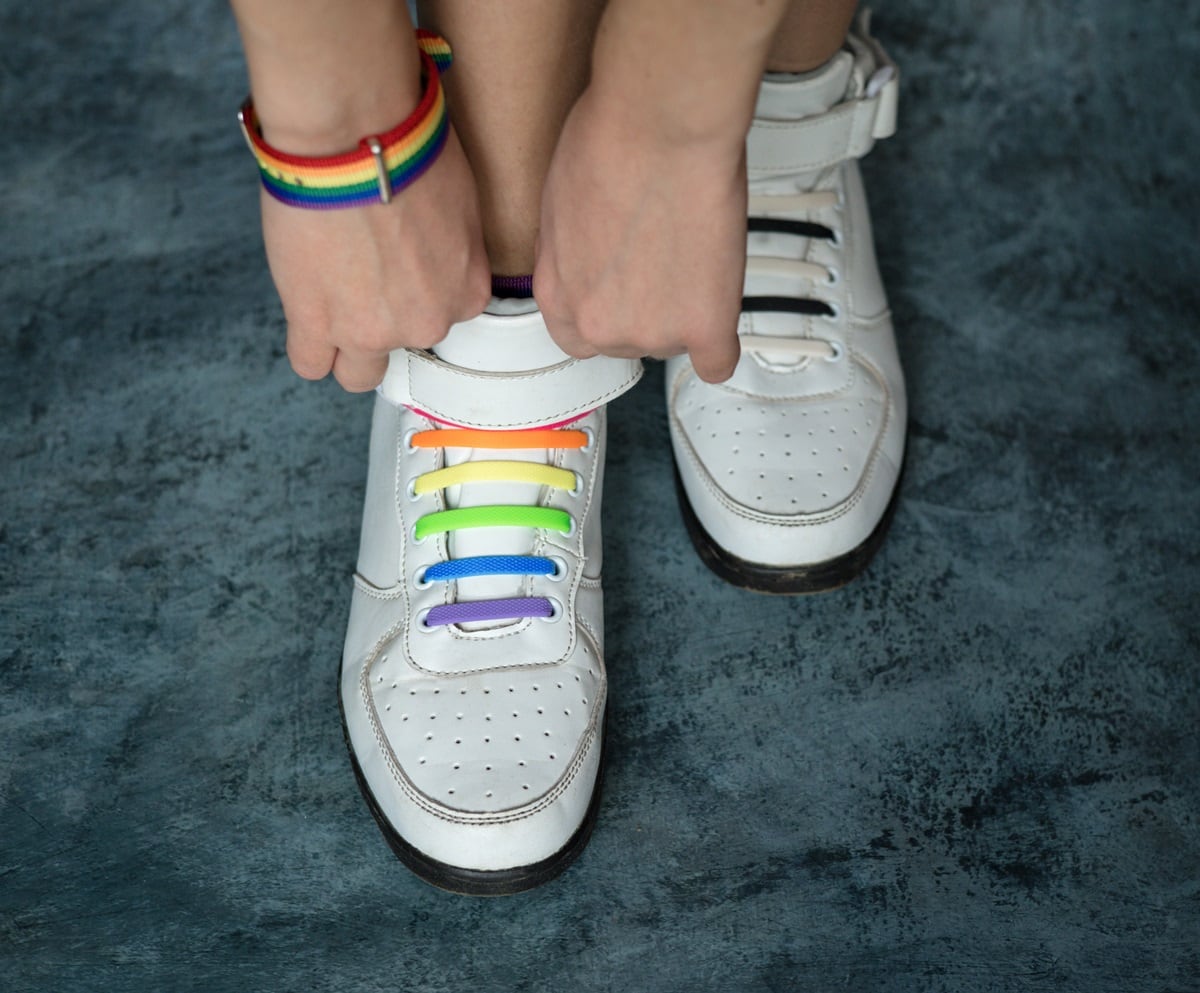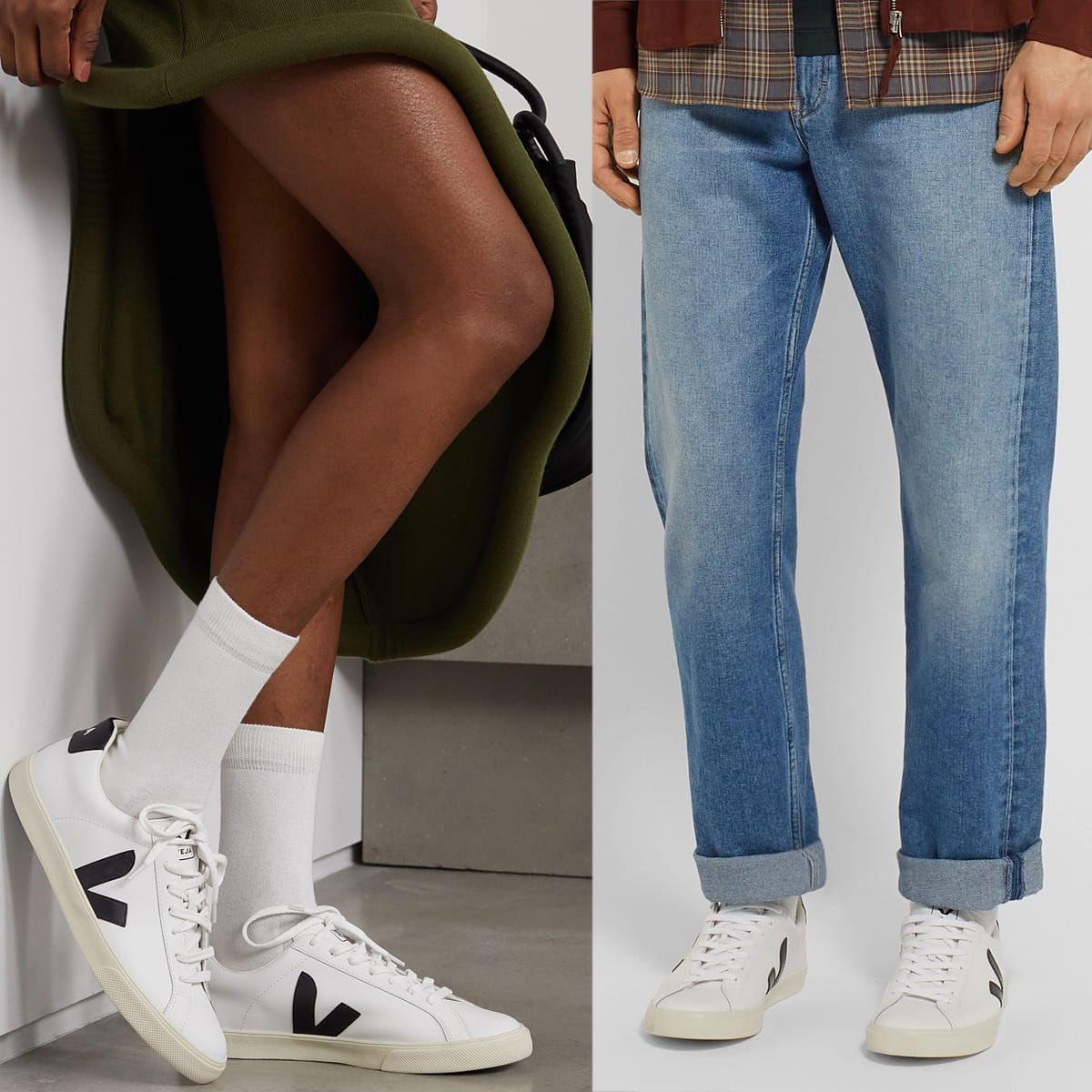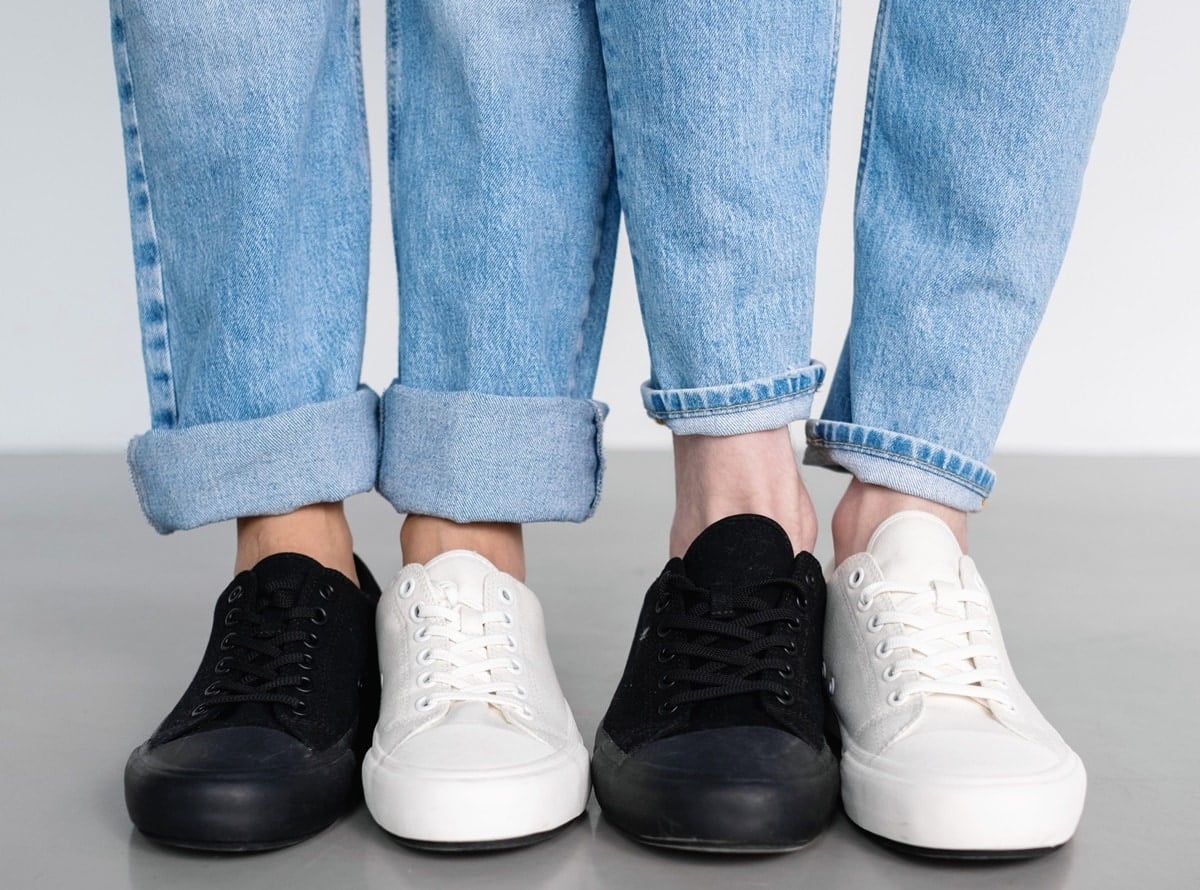Sneakers and sandals are becoming increasingly unisex with gender-neutral silhouettes and color schemes. You’ll often find identical shoes in both the men’s and women’s sections. Men might consider buying women’s shoes when unisex styles are on sale, sold out, or discontinued.
While men’s and women’s shoes may look the same, a few differences can make shopping difficult in the women’s section.
Women’s shoes are typically more affordable than men’s shoes, making them a great alternative if you can find the same style in the women’s section in your size.
 Shoes, particularly sneakers and sandals, are becoming increasingly unisex as shoe brands now offer gender-neutral silhouettes and color combinations (Credit: DiandraNina / Shutterstock)
Shoes, particularly sneakers and sandals, are becoming increasingly unisex as shoe brands now offer gender-neutral silhouettes and color combinations (Credit: DiandraNina / Shutterstock)
Although women usually have a wider forefoot width and smaller ankles and heels than men, most men can shop for women’s sneakers without any problems.
We’re sharing everything you need to know about how men can wear women’s shoes, including finding the right size of women’s sneakers to match your men’s size.
Can Men Comfortably Wear Women’s Shoes? What You Need to Know
Men can wear women’s shoes if the style is available in their equivalent shoe size.
It’s worth remembering that gender-specific shoes are usually a marketing ploy, with most casual styles available in both the men’s and women’s sections. Unisex shoes are increasingly on the rise as fashion becomes more gender-neutral.
Men and women are increasingly shopping from each other’s footwear sections. Don’t feel limited to shopping for sneakers only in the men’s sections!
Buying women’s shoes can give you a more comfortable fit, access to different colors, and even save you money.

If your feet fit into women’s shoes, there’s no reason why you can’t wear them. Men with smaller and narrower feet will generally find it easier to shop in the women’s section as their feet will be more compatible with the typical woman.
A quick scroll through social media – and the online sneaker community – will show you that plenty of men are now shopping in the women’s footwear section. Footwear, especially casual shoes, is no longer gender specific.
Benefits of Men Buying Women’s Shoes: Comfort, Style, and Savings
Shoes are increasingly becoming gender-neutral, particularly casual styles like sneakers, slides, and sandals.
It’s not uncommon to find the same shoe – often in different color options – in both the men’s and women’s sections. Men who buy women’s shoes save money and may get a better fit for their feet.

Women typically have smaller feet than men, making women’s shoes an ideal option for shorter men with narrow feet.
Men’s shoes are usually wider than their female counterparts. Popular brands like Adidas and Vans have brought in unisex shoes designed to suit both men and women.
We recommend reading the specific guidance from any brand offering unisex footwear, which usually includes sizing recommendations.

Men also buy women’s shoes as they have a lighter midsole, making them ideal for travel and everyday wear. Women have an average of 15% less muscle than men, meaning their footwear can have a lighter midsole.
You may also want to shop for women’s shoes to expand the colors in your shoe closet. Most men’s shoes stick to neutrals and muted shades, while the same style in the women’s section will include a wider range of hues and colors.
Shopping for shoes in the women’s section can also save you money. Women’s shoes require less material and are usually priced lower than men’s shoes, even in the same style.

Men increasingly buy women’s sneakers as they’re more supportive than male-specific styles. Women’s sneakers account for their wider hips, making the shoes have a more adaptive style to support the foot’s inner side and weight distribution.
Swapping to women’s sneakers may give you a more comfortable experience than wearing men’s shoes.
How to Convert Men’s Shoe Sizes to Women’s: A Practical Guide
Men with narrower feet may find it easier to get shoes that offer a comfortable fit by shopping in the women’s section. Likewise, women with wider feet may also wish to shop in the men’s section when buying shoes.
Most men’s shoe sizes can be easily converted into women’s by going a size and a half up. For a detailed comparison of men’s and women’s shoe sizes and conversion charts, refer to our comprehensive guide.
However, you may want to go up another half size if you have wider feet. Women’s shoes are made to accommodate their narrower and more curved feet.

The best way to find your size of women’s sneakers as a man is to try on a few styles from your favorite footwear brand in-store.
It’ll allow you to try different styles to find the best fit. You may find that women’s shoes from one brand suit you better than those from direct competitors, especially for casual sneakers.
Asian and Hispanic men typically find it easier to find their men’s shoe size in women’s shoes as most usually stand under 5’6”, with an average women’s shoe size between 8.5 and 10.5.
Men with larger feet may struggle to find their women’s shoe style in-store or in every style. Larger women’s shoe sizes are usually limited to a small number of styles.
Mistakes to Avoid When Shopping for Women’s Shoes as a Man
Not all women’s shoes are suitable for men. Athletic shoes are at the top of this list as they’re designed to suit a woman’s physical build, accounting for the narrower heel and broader toe box that women require.
You’ll mainly want to buy women’s open-toe shoes, such as Birkenstocks or casual sneakers.
Men can wear women’s shoes, particularly sneakers, without any issues. You’ll want to do your research and account for your foot type when shopping for women’s shoes as a man. Use this in-depth guide to ‘wearing women’s sneakers as a man’ to help you purchase your first pair of women’s shoes.
It may take some trial and error to determine whether women’s sneakers will impact your performance if worn during exercise. We recommend visiting a specialist sports or footwear store if you plan to buy women’s sneakers for sports and exercise.
Explore More About Unisex Footwear
For readers interested in exploring more about unisex footwear, Your Next Shoes offers several insightful articles:
- Vans Old Skools: The Timeless Sneaker That’s Perfect for Any Occasion – This piece delves into the versatility of Vans Old Skool sneakers, highlighting their unisex appeal and styling options.
- Mary Jane Shoes: Timeless Classics with a Modern Twist – Explore the history and evolution of Mary Jane shoes, a unisex style that has remained fashionable across genders.
- The 10 Best Timberland Boots for Men and Women: A Buyer’s Guide – This guide reviews popular Timberland boots known for their high-quality, unisex designs and affordable prices.
- 11 Best Loafer Brands and Comfy Loafers for Men and Women – Discover top loafer brands offering comfortable and stylish options suitable for all genders.
- What Are Chelsea Boots? Why These Popular Shoes Are in Style – Learn about the unisex origins and enduring popularity of Chelsea boots, a staple in many wardrobes.
These articles provide a deeper understanding of unisex footwear trends and options, catering to diverse style preferences.
